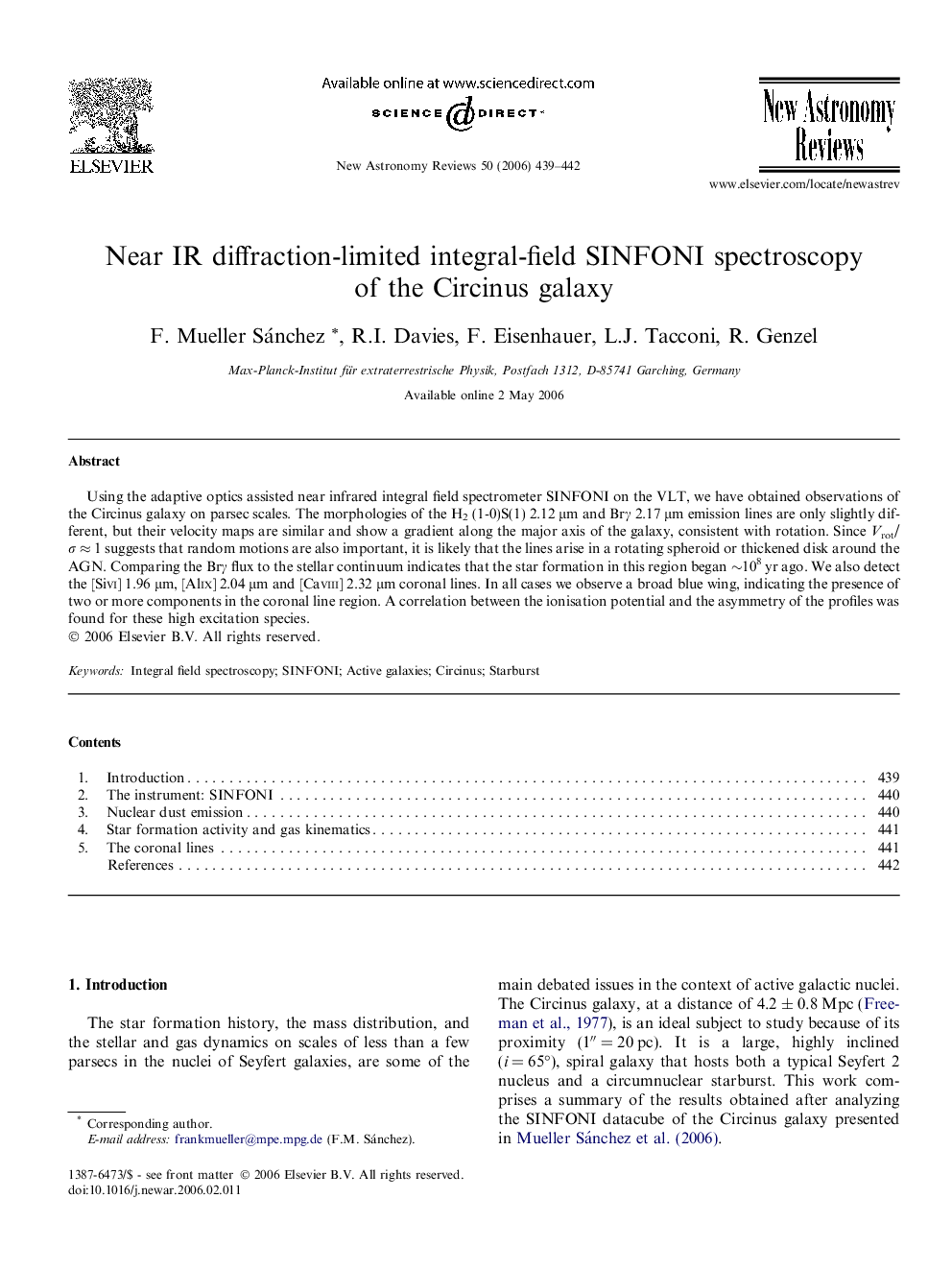| Article ID | Journal | Published Year | Pages | File Type |
|---|---|---|---|---|
| 1780397 | New Astronomy Reviews | 2006 | 4 Pages |
Abstract
Using the adaptive optics assisted near infrared integral field spectrometer SINFONI on the VLT, we have obtained observations of the Circinus galaxy on parsec scales. The morphologies of the H2 (1-0)S(1) 2.12 μm and Brγ 2.17 μm emission lines are only slightly different, but their velocity maps are similar and show a gradient along the major axis of the galaxy, consistent with rotation. Since Vrot/Ï â 1 suggests that random motions are also important, it is likely that the lines arise in a rotating spheroid or thickened disk around the AGN. Comparing the Brγ flux to the stellar continuum indicates that the star formation in this region began â¼108 yr ago. We also detect the [Sivi] 1.96 μm, [Alix] 2.04 μm and [Caviii] 2.32 μm coronal lines. In all cases we observe a broad blue wing, indicating the presence of two or more components in the coronal line region. A correlation between the ionisation potential and the asymmetry of the profiles was found for these high excitation species.
Related Topics
Physical Sciences and Engineering
Physics and Astronomy
Astronomy and Astrophysics
Authors
F. Mueller Sánchez, R.I. Davies, F. Eisenhauer, L.J. Tacconi, R. Genzel,
